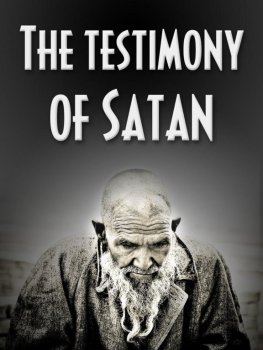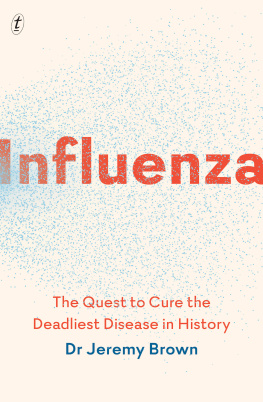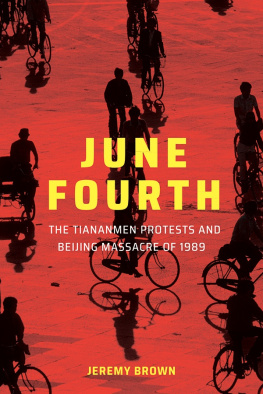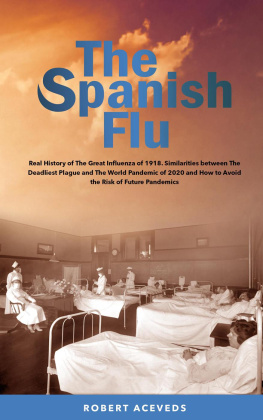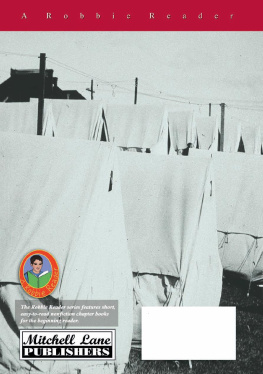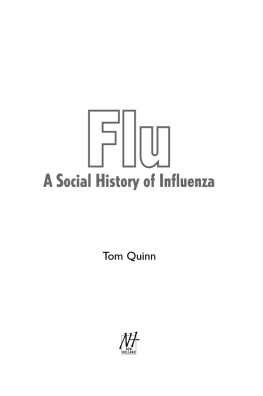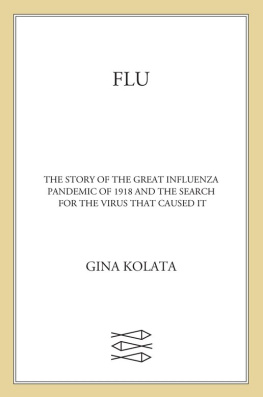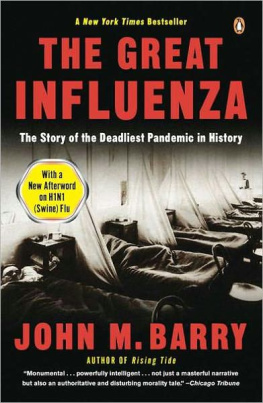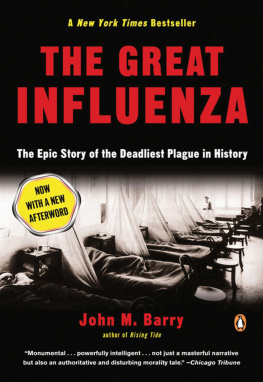Thank you for downloading this Simon & Schuster ebook.
Get a FREE ebook when you join our mailing list. Plus, get updates on new releases, deals, recommended reads, and more from Simon & Schuster. Click below to sign up and see terms and conditions.
CLICK HERE TO SIGN UP
Already a subscriber? Provide your email again so we can register this ebook and send you more of what you like to read. You will continue to receive exclusive offers in your inbox.
We hope you enjoyed reading this Simon & Schuster ebook.
Get a FREE ebook when you join our mailing list. Plus, get updates on new releases, deals, recommended reads, and more from Simon & Schuster. Click below to sign up and see terms and conditions.
CLICK HERE TO SIGN UP
Already a subscriber? Provide your email again so we can register this ebook and send you more of what you like to read. You will continue to receive exclusive offers in your inbox.

Touchstone
An Imprint of Simon & Schuster, Inc.
1230 Avenue of the Americas
New York, NY 10020
www.SimonandSchuster.com
Copyright 2018 by Dr. Jeremy Brown
All rights reserved, including the right to reproduce this book or portions thereof in any form whatsoever. For information, address Touchstone Subsidiary Rights Department, 1230 Avenue of the Americas, New York, NY 10020.
First Touchstone hardcover edition December 2018
TOUCHSTONE and colophon are registered trademarks of Simon & Schuster, Inc.
For information about special discounts for bulk purchases, please contact Simon & Schuster Special Sales at 1-866-506-1949 or .
The Simon & Schuster Speakers Bureau can bring authors to your live event. For more information or to book an event, contact the Simon & Schuster Speakers Bureau at 1-866-248-3049 or visit our website at www.simonspeakers.com.
Interior design by Jill Putorti
Jacket photograph by Science History Images / Alamy Stock Photo
Author photograph Tali Kozlowski
Library of Congress Cataloging-in-Publication Data
Names: Brown, Jeremy, 1964 author.
Title: Influenza : the hundred year hunt to cure the deadliest disease in history / Jeremy Brown.
Description: New York : Touchstone, 2018. | Includes bibliographical references and index. |
Identifiers: LCCN 2018033854 (print) | LCCN 2018038141 (ebook) | ISBN 9781501181269 (Ebook) | ISBN 9781501181245 (hardback) | ISBN 9781501181252 (paperback)
Subjects: LCSH: InfluenzaPreventionUnited States. | InfluenzaUnited StatesHistory. | Influenza Epidemic, 1918-1919. | BISAC: SOCIAL SCIENCE / Disease & Health Issues. | HISTORY / Military / World War I. | MEDICAL / Diseases.
Classification: LCC RA644.I6 (ebook) | LCC RA644.I6 B76 2018 (print) | DDC 614.5/18dc23
LC record available at https://lccn.loc.gov/2018033854
ISBN 978-1-5011-8124-5
ISBN 978-1-5011-8126-9 (ebook)
Dedicated to the memory of the dead and the living:
Private Roscoe Vaughan of Buffalo, New York, who died of influenza at Camp Jackson, South Carolina, on September 26, 1918. His death helped us better understand the virus that killed him and millions of others.
Autumn Reddinger, whose fight against influenza is a lesson in personal courage and the triumphs of modern medicine.
To prevent the spread of Spanish Influenza, sneeze, cough or expectorate into your handkerchief. You are in no danger if everyone heeds this warning.
SIGNS POSTED IN PHILADELPHIA RAILCARS, OCTOBER 1918
Theres nothing quite like flu in terms of the risk.
TOM FRIEDEN, FORMER DIRECTOR OF THE CENTERS FOR DISEASE CONTROL AND PREVENTION, JANUARY 2017
PROLOGUE
AUTUMN
Autumn Reddinger was deathly sick. Her lungs were not working. Her heart was so weak that it could no longer pump blood through her body. The only thing keeping her alive was a heart-lung machine. She lay corpse-like in the intensive care unit. Her parents had called their pastor to administer last rites. How would they tell Autumns young children that their mom, who was raising them alone, was dying from influenza, an illness that was usually shrugged off as a minor inconvenience? That a vibrant young woman who went to the gym twice a week was now, in December 2013, at deaths door?
During the Christmas break, Autumn thought she had a cold but soldiered through the holiday with her parents and two young children at her home in western Pennsylvania. Two days later she felt much better and went to dinner with a friend, Joe. When she returned to her house she began texting him, but the messages he received were jumbled and made no sense. She had been totally coherent at dinner, and Joe knew she hadnt had any alcohol. Alarmed, he got in his car and drove to Autumns home, where he found her confused and weak. He called her parents to watch the kids and drove her to the local hospital in Punxsutawney. She told the emergency room nurses that her lungs were on fire.
The ER physician went through every test: Autumns lungs sounded clear when he listened to them with a stethoscope. Her pulse and blood pressure were perfect. She had no fever. Her chest X-ray showed no infection in her lungs. Her blood tests were normal, and a rapid test for influenza came back negative. But something wasnt right, so he admitted Autumn to the hospital for observation, just to be safe, and started her on antibiotics.
Autumns condition quickly worsened. Over the next few hours she became increasingly disoriented and found it harder and harder to breathe. The antibiotics didnt seem to make a difference. The staff made a call to Mercy hospital in Pittsburgh, a two-hour drive away. Autumns condition was now critical. Transferring her by ambulance was too risky. Mercy sent a medevac helicopter. By the time it arrived, Autumn could no longer breathe on her own. She was sedated, a tube was put into her throat, and she was connected to a ventilator.
Autumn was taken directly to the intensive care unit at Mercy. By now she was coughing up blood, and it became almost impossible to get enough oxygen into her to keep her alive. A chest X-ray showed that her lungswhich had sounded clear and looked entirely normal a few hours earlierwere now filled with pus and fluid. She was given more antibiotics and hooked up to IV medications to keep her blood pressure from dropping. At one a.m. the ICU team called in Dr. Holt Murray, who had trained as an emergency physician and now specialized in critical care. He was Autumns last hope.
Murray was an ECMO specialist. ECMO, or extracorporeal membrane oxygenation, is the medical term for the technique used by a heart-lung machine. It takes dusky and dark blood, scrubs it of carbon dioxide, fills it with oxygen, and sends it back, red and healthy, into the body. Doctors use it when they perform heart or lung transplants. Since Autumns lungs were not functioning at all, the machine could step in and do their work.
When Murray talks to family members about putting a patient on ECMO, he has very little timeperhaps only a few minutesto explain the procedure and get their permission. I dont think we have other options, he will say, though he is careful to be cautious. ECMO is potentially lifesaving, but it comes with a host of complications.
Families are usually in no state to make an informed decision, and are highly dependent on the doctor to guide them. Autumns parents, who had arrived at Mercy, agreed with the ECMO plan.
Very quickly Murray inserted a big needle into a vein in Autumns groin. This would remove her blood and send it to the machine to be scrubbed and filled with oxygen. Another needle went into her neck, where the blood would return. It didnt take long for the ECMO machine to improve her oxygen levels. But then her heart stopped.
Next page

